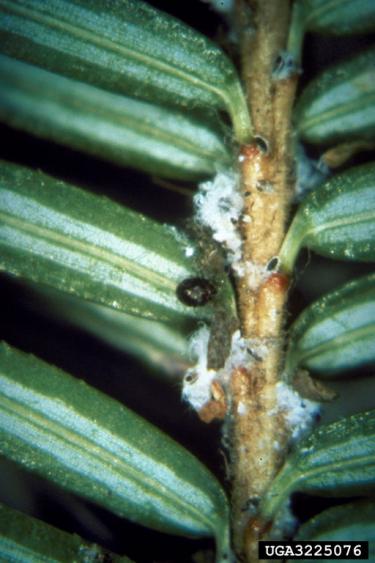When You Have a Hemlock Woolly Adelgid Outbreak
When you've determined your hemlocks are being attacked by hemlock woolly adelgid, you have multiple options.
First, a couple of tips:
- Don't cut or plant when the hemlock woolly adelgids are dispersing in spring and summer; this can help the insects spread.
- Don't fertilize infested hemlocks. It just helps the adelgid.
CUT. If you have a single infested tree, removing it may protect other trees. It may not be worthwhile to cut infested trees on a larger scale. Once infested trees have lost more than half their crown, they have little chance of recovering. But, in stands where hemlock is dominant, cutting the dead and dying trees may spur the growth of weeds. So cutting is not recommended unless the goal is to recover timber value or to remove dangerous dead trees.
CUT JUST A FEW TREES. In a stand of hemlocks, you may wish to cut only some trees. This will give less chances for weeds to invade. If the hemlock are growing among many other species, cutting them may open up space for other conifers or for hardwoods.
DO NOTHING. After the infestation, hemlock will decline and die gradually over a period of years. In most areas, this means more light will reach the forest floor gradually and hardwood trees will grow in the place of the hemlocks. Meanwhile, the dead trees provide wildlife habitat.
TREAT WITH PESTICIDES. This can save an individual tree or protect individual trees from infection, but it isn't practical for a whole forest. Trees can be sprayed with insecticidal soap or horticultural oils that kill the insects on contact or treated with systemic insecticides that are applied to the soil or the trunk.
A local extension agent or forester can help you decide what to do if you have hemlock woolly adelgids. For example, you might want to plant other native conifers to take the place of dead hemlocks.
You can try to keep hemlock woolly adelgid away from your trees, or at least catch it early.
How can I get more tips?
It’s simple! Enter your email below.

